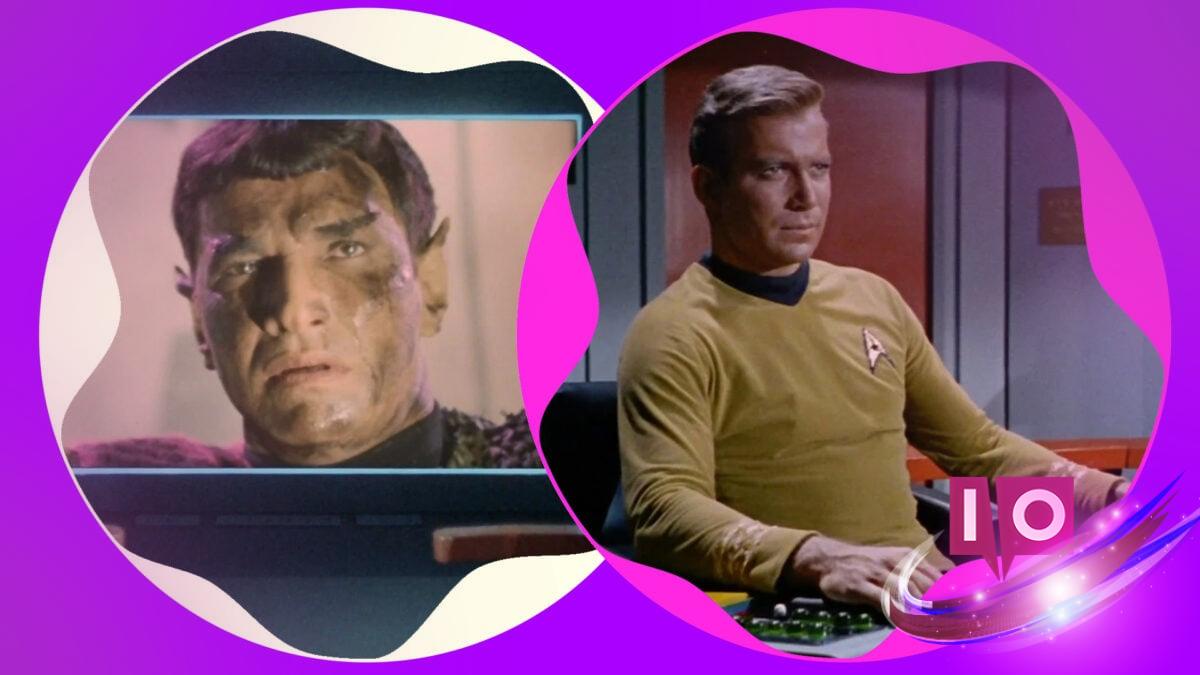For all its portrayal of a utopian future, Star Trek is deeply rooted in conflict. The ongoing debate about whether Starfleet embodies military might or scientific exploration, as well as defining quarrels with adversaries like the Klingons and the Borg, shapes the fabric of the series. Yet, perhaps the most captivating and elusive conflict in Star Trek history is the Earth-Romulan War—an event that has never graced the screen but remains a pivotal aspect of the franchise’s lore.
The enigma surrounding the Earth-Romulan War has intrigued fans for decades, largely due to its introduction in “Balance of Terror,” one of the series’ most lauded episodes. This 14th installment of Star Trek‘s inaugural season not only introduced viewers to the Romulans but also hinted at the deadly strife between them and Earth. Notably, the series revealed that the Romulans guarded their secrets so closely that no human ever laid eyes on them until over a century later during the episode itself.
This narrative choice has profoundly influenced how the conflict is perceived in Star Trek storytelling. While some unauthorized texts and cancelled projects aimed to explore the war’s details, including the initial plans for Star Trek: The Beginning and potential projects like Star Trek: United, the intrigue lies in the uncertainty surrounding it; the less we know, the more it fascinates us.
Prelude to Conflict

During the early 2150s, Romulan frustration towards United Earth grew as the NX-01 Enterprise transformed humanity into a diplomatic powerhouse. By mid-decade, a war-torn Alpha Quadrant began to stabilize due to strategic negotiations led by Captain Archer and his crew, uniting species like the Vulcans, Andorians, and Tellarites.
This new balance displeased the Romulan Star Empire, which thrived on chaos. They intensified efforts to sow discord among the major powers of the quadrant while grappling with an internal desire for unification with the Vulcans. Despite aspirations for reunification, Romulan agents, coordinating with Vulcan High Command leader V’Las, attempted to instigate a conflict that Archer thwarted, delaying Romulan ambitions.
The situation escalated with the Babel Crisis in 2155, where Romulan drone ships attacked Tellarite and Andorian vessels. Equipped with multispectral emitters to disguise their identities, these ships aimed to ignite tensions. The combined forces of United Earth and its allies ultimately thwarted these plans, stabilizing the quadrant instead of inciting war. This cooperation among the different species laid the groundwork for the Coalition of Planets, an unprecedented interstellar alliance, later that same year.
The Four-Year War

The formation of the Coalition proved to be the catalyst for the Earth-Romulan War, which commenced in 2156. Although details remain scant, it is known that the conflict predominantly involved Romulan incursions against United Earth forces. Spock, reflecting on the war over a century later, described it as primitive by contemporary standards, dominated by ships and atomic weaponry that fell short of the technological advancements seen in the 22nd century.
Notably, during this four-year period, visual communication between the Romulans and their opponents was nonexistent, keeping the Romulans’ identity—a secret thread through their history—intact. The War concluded in 2160 with the Battle of Cheron, a catastrophic defeat for the Romulan forces that would have lasting military and political ramifications.
Centuries of Aftermath

The war’s end reverberated across the Alpha and Beta Quadrants. A peace treaty was established via subspace radio, creating a Neutral Zone that neither side could violate without facing severe repercussions. While the Romulans withdrew from active political engagement for decades, Starfleet retained vigilance on its side through monitoring stations.
In 2161, the Coalition of Planets transitioned into the formal United Federation of Planets under President Jonathan Archer, heralding a new era of interstellar cooperation. For the next century, Romulan activity remained restrained, tested only when an unnamed commander attacked Starfleet monitoring stations along the Neutral Zone, marking humanity’s first visual interaction with the Romulans and confirming their resemblance to Vulcans.
Despite periods of tension and momentary alliances—like the Romulans joining forces with the Federation during the Dominion War—the legacy of distrust persisted until the calamitous supernova annihilated Romulus and Remus in 2387, effectively ending a storied chapter of interstellar intrigue.
What were the key events of the Earth-Romulan War?
The war’s pivotal moments include the Babel Crisis and the catastrophic Battle of Cheron, which marked a decisive defeat for the Romulans and shaped future relations with the Federation.
What impact did the Earth-Romulan War have on interstellar relations?
The war led to a decades-long distrust characterized by the establishment of the Neutral Zone, affecting political dynamics across the Alpha and Beta Quadrants.
Why is the Earth-Romulan War largely unexplored in Star Trek?
The mystery surrounding the war contributes to its allure, with little visual representation allowing fans to imagine its depth and implications.
Intrigued by the complexities of the Star Trek universe? You’re not alone. Explore more engaging stories and insights at Moyens I/O to satisfy your curiosity.
